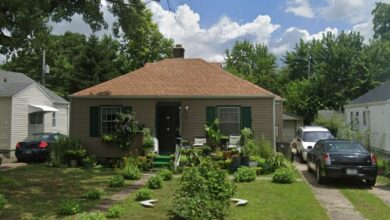MEDICAL SCHOOL IN THE 60’S: 1965-1966

I started medical school just after Labor Day in 1965. Fifty-five and a half years ago, a lot of things were different. Tuition was $350 per semester, there were 204 students in my class, we all wore white shirts and ties to lectures, and smoking was common in the lecture room. Yes, that’s right. Hard to imagine, isn’t it.
Starting medical school is an emotional and intimidating time. The emotion I experienced the most in those early months was abject fear; fear of failure, fear I wasn’t smart enough to be there, fear of having to compete with classmates who were Phi Beta Kappas. My anxiety was worsened right away by the constant “one-upmanship” by other students. They wanted to appear smart so they would ask if I knew this fact about a subject. They tried to be “one-up” on me and others. When I didn’t know something, or had never heard of what they were talking about, I felt dumber and dumber. I constantly worried about flunking out. Med school had a reputation for being tough, and those who couldn’t hack it were left behind to pursue other careers. I felt a lot of pressure.
The first year, I lived with three other freshman students in an apartment on N. Pennsylvania St. behind Shortridge High School. I didn’t know two of my roommates before we lived together. One of them was a serious intellectual. There was nothing he didn’t know a lot about, especially any topic covered in the neuroanatomy lecture earlier that day. He became a neurosurgeon. His roommate was a “good ol’ boy” from a small town in southern Indiana, who became an orthopedic surgeon. Mine was a fraternity brother I knew well who went into anesthesia. We rode to class together each morning, rode home at the end of the day, went grocery shopping together, and cooked our own supper each evening. Our attempt at fried chicken was particularly inept. And round steak looks more tender in the package than it actually is.
All med students had the same class schedule, same professors, same tests, and same fears. All 204 of us attended lectures and labs at the same time. Our classes and labs were either in the Med-Science building or nearby Emerson Hall on the Indiana University Medical Center campus west of downtown Indianapolis. Today’s IU Hospital had not been built.
It wasn’t long before we lost two classmates. Gross anatomy, better known as cadaver lab, was literally the first class we had. The first day, after our 8:00 am lecture, we headed to a cavernous room called “the lab” for a three-hour dissection session. Here we were introduced to our cadaver stored in a closed stainless steel cabinet on a dissection table. Each cadaver was shared by four students, two on each side, and our task was to spend the next nine months dissecting her every part. Finally, we were instructed to open our cabinet to inspect our cadaver. As you might expect, the room was filled with anxious students. None of us had ever experienced this before. For one student it was overwhelming. Not long after seeing her cadaver, she passed out cold—fainted. When she came to, she was in the hospital. It was then she realized med school wasn’t for her. She never returned to class and dropped out right then.
A week later we lost a second classmate after a lecture. Dr. Warren Andrew, the chairman of the anatomy department, taught Histology, the microscopic study of body tissues (eg. what do liver cells look like under the microscope?). During lectures, Dr. Andrew liked to call students up in front of the class and pepper them with questions. It was very intimidating and everyone feared being called upon. For one classmate it was too much. He failed to answer any of Dr. Andrew’s questions, and the embarrassment was too much for him. Dr. Andrew didn’t let up on him, either, and the torment went on far too long. That was the last time we saw him, too. The next day he dropped out.
Then there was Dr. Hunter Soper, a brilliant internist, who conducted CPC’s—clinicopathologic conferences. These conferences occurred once a month on Saturday morning. Ahead of time, we were given a written summary of a case whose outcome wasn’t determined until the patient died and had an autopsy. We freshman students were to study this case and see how close we could come to determining the autopsy findings. It was very difficult for first-year students. I didn’t know most of the terminology or what acronyms like BUN or SGOT meant. I didn’t know the significance of certain phrases and facts. I was new to this whole thing. During his case discussion, Dr. Soper called students in front of the class just as Dr. Andrew did. We freshman students knew even less about clinical medicine than about histology so we were really clueless. Dr. Soper could be very intimidating, but this was his method of introducing us to case presentations and diagnosing complicated patients. Some classmates had worked in a lab, pharmacy, or hospital before med school, and were a bit more familiar with the terminology. But for this naive 21-year-old, it was a struggle. Again, I was fortunate not to be called upon, but I sat in class praying he wouldn’t call me.
The first-year curriculum included Physiology, Neuroanatomy, Biochemistry, Cell Biology (now called Molecular Biology) in addition to Histology and Gross Anatomy. We also had a once-a-week lecture by the psychiatry department called “Ferment in Medicine.” To this day I don’t know what this was for. It was taught by Dr. Ed Tyler and Dr. John Nurnberger, the department chairman. I’m not certain if this course helped us or them. I know it didn’t help me. Several classmates developed a god-and-disciples relationship with Dr. Tyler and met with him outside of class time.
For me, anatomy, histology, physiology, and neuroanatomy were fascinating. Neuro was incredibly complex and much more important than I realized at that time. Biochemistry and cell biology were “Greek to me.” Both were very difficult. Both were hard to understand, and I failed to grasp how they would apply to my future career. I thought both courses were used to separate the good students from the average.
Biochem professors were a different lot. They had unique interests and quirky personalities. I guess if you spent 95% of your time in a chemistry lab, you would, too. One example was the blackboard incident. Long before whiteboards and Sharpies, there were blackboards and chalk. The professor, Dr. Bonner, wrote a formula in white chalk on the board during his lecture. When he noticed he had made an error, he looked for an eraser. Finding none, he removed his starched white lab coat and used it to erase his mistake. We students all looked at each other as if to say, “Can you believe that?”
The best teacher the first year was Dr. Charles Boyer, who taught Neuroanatomy. He made a very complicated system come alive. He was an incredible artist, who could accurately draw on the chalkboard the anatomy of each part of the brain and spinal cord. To add emphasis and clarity to his diagrams, he showed us live patients who had problems caused by abnormalities of the part of the brain or spinal cord we were studying. His lectures were epic! When I finally started taking care of patients, I realized the importance of what he taught us and how Neuroanatomy applied to a large percentage of the patients I saw every day.
Earlier I said medical schools are different now, and they are. Medical School tuition at Indiana University is now $30,000 for in-state and $43,000 for out-of-state students. Med school classes in 1965 were all in Indianapolis at the Medical Center. IU now has 8 regional campuses statewide where a total of 330 students per year spend their first two years. We had 15 women and 4 African-Americans in our class of 204 (9%). Now 40% of each class is women and minorities. Of the 204 students who started with me, 186 received MD degrees.
Anatomy lab was the perfect place to get to know your classmates. Each cadaver had four students, and all cadavers were locked in cabinets in a huge lab room. Occasionally, I walked over to my roommate’s table to ask him how his dissection was going. I met his 3 lab partners—Walthall, Walton, and Wentworth—he was Warren. My lab partners were Gemmer, Gick, and Gieseke. We were next to Hardigg, Harris, Handler, and Hague, at one end, and Folkening, Foltz, Fowler, and Gastineau at the other. Walking around in the lab was encouraged, so it was very easy to meet classmates, and I did. We all helped each other. If someone found a good phrenic nerve, they were glad to share it with everyone else and explain how they found it.
Our cadavers were preserved in formaldehyde. It had a very strong, recognizable odor that permeated the lab. To protect our clothing, we wore white, full-length coats. Those lab coats never left the lab because they were stained by formaldehyde and smelled terrible. The university laundered them every week. Our lab coats always stayed in the lab, but the odor of formaldehyde that bled through them onto our clothing did not. When we stood in the Union Building cafeteria line after lab, everyone knew we were first-year medical students by the smell of formaldehyde all over us. The smell of formaldehyde lingers in my mind 55 years later.
There’s much more to tell, but this blog is already long enough. In the next few blogs, I’ll share more stories about my medical school years. Four years is a long time, and experiences accumulate quickly. Thanks for your interest and attention.




